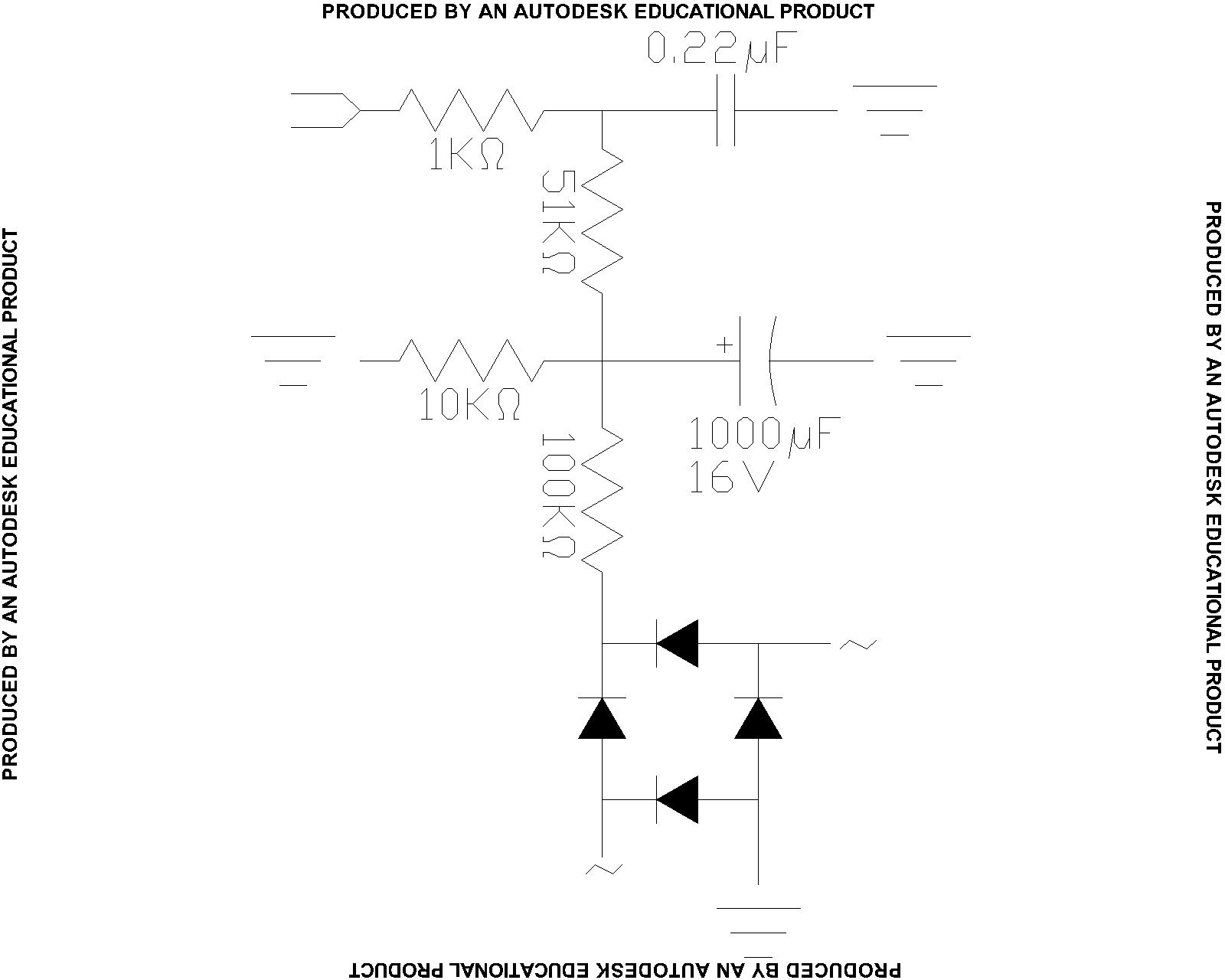ac voltage checker via Caps and RCTIME
I am trying to wire up an AC voltage checker. I've wired a DC checker and it works great, but I keep blowing fuses (on a variable voltage box) when I try the same idea with an AC setup. Attached is my diagram. Please tell me what I am doing wrong. I'm starting out the voltage at 6VAC, and even that is blowing the 3A fuse.
I may be a little excessive on resistors, but the way I had it wired was everything above the 1000µF cap (not including) was how I measure the DC voltage. Now I added a voltage divider (10K-ohm and 100K-ohm) with a 1000µF cap to stabilize the AC; and finally the bridge rectifier (don't know the symbol for that -- that's the 4 diodes at the bottom).
What am I doing wrong?
I may be a little excessive on resistors, but the way I had it wired was everything above the 1000µF cap (not including) was how I measure the DC voltage. Now I added a voltage divider (10K-ohm and 100K-ohm) with a 1000µF cap to stabilize the AC; and finally the bridge rectifier (don't know the symbol for that -- that's the 4 diodes at the bottom).
What am I doing wrong?



Comments
If you're blowing fuses, you must have a short circuit somewhere.
That's what I was thinking (a short), but i don't know where...there are high-ohm resistors between everything.
I got up to 8.4V this time.
I made sure the variable AC voltage box (thingy) wasn't frying itself. I ran a power supply off it at 120V.
can someone else wire up something similar? it seems like it should work....
It's kinda old, but we have used it often and never had a problem.
Note: it is rated for 5A, but we only have 3A fuses (should work fine....same voltage).
·
Edit: Man camera phones suck! I'll work on getting a real photo tomorrow some time (during work hours here in PST).
-Phil
Post Edited (Bobb Fwed) : 6/24/2008 3:45:19 PM GMT
-Phil
But as others have suggested, SAFETY is your number one priority and should never be ignored!
▔▔▔▔▔▔▔▔▔▔▔▔▔▔▔▔▔▔▔▔▔▔▔▔
Beau Schwabe
IC Layout Engineer
Parallax, Inc.